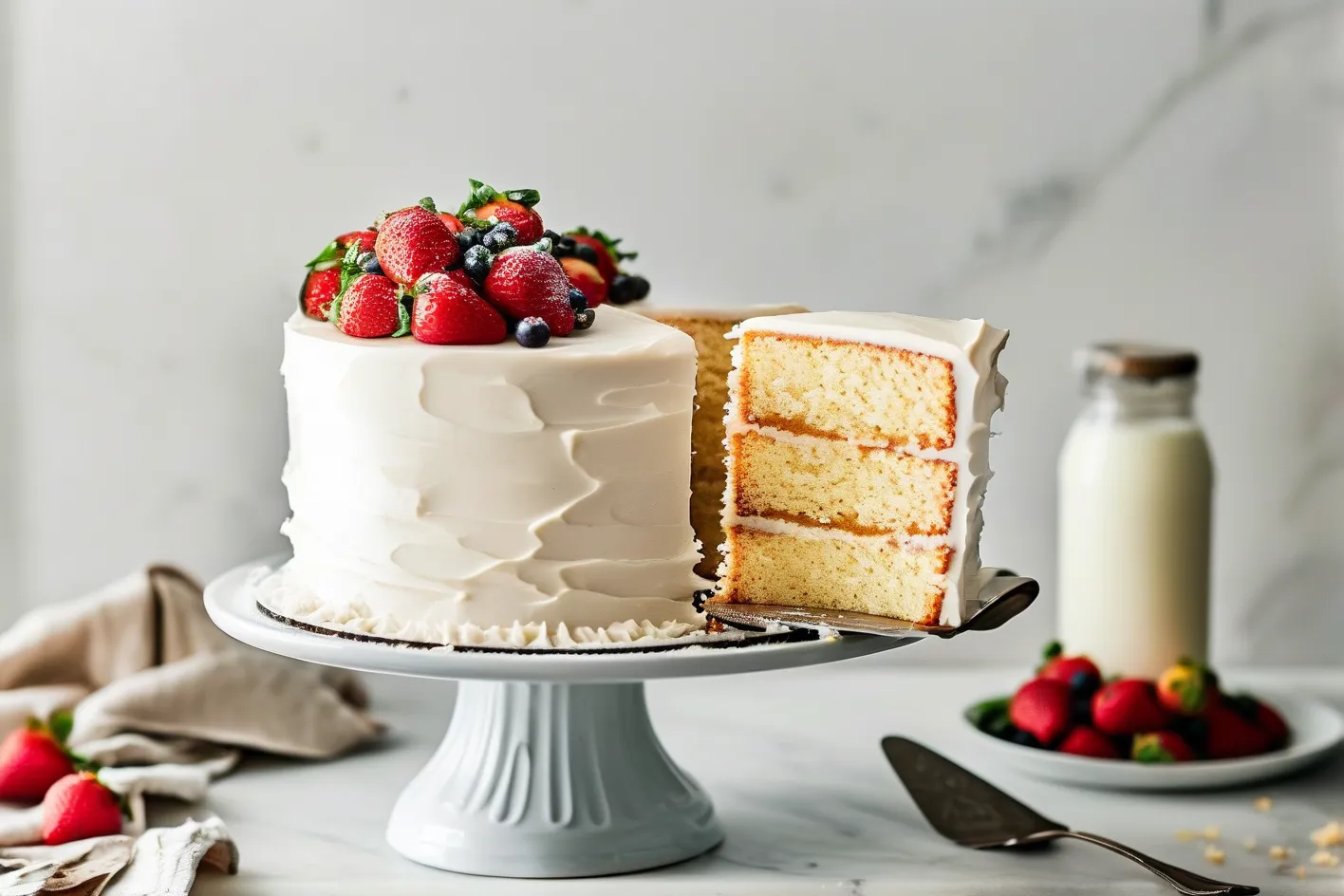There’s nothing worse than a dry, crumbly cake that tastes like cardboard. While boxed white cake mixes are convenient, they often lack the moist texture and rich flavor of homemade desserts. Fortunately, with a few simple ingredient swaps and techniques, you can transform that basic mix into a bakery-worthy masterpiece. Professional bakers and food scientists agree that small adjustments to fat ratios, acidity, and mixing methods make all the difference.
Swap Water for Dairy (or Dairy Alternatives)
The first rule of doctoring cake mixes? Never use water as directed. Replace it with whole milk, buttermilk, or full-fat coconut milk for added richness. Dairy proteins enhance browning reactions while fats improve mouthfeel. According to a 2024 Journal of Food Science study, cakes made with buttermilk retained 18% more moisture after baking compared to water-based versions. For a vegan option, oat milk blended with 1 tsp apple cider vinegar mimics buttermilk’s tanginess.
Add an Extra Egg Yolk
Most white cake mixes call for egg whites only, but adding one extra yolk introduces emulsifiers that bind moisture into the crumb. Chef Stella Parks, author of BraveTart: Iconic American Desserts, notes that yolks’ lecithin creates a more elastic batter, preventing collapse during cooling. For a lighter texture, whip the egg whites separately to stiff peaks before folding them into the batter.
Boost Flavor with Extracts and Zest
Artificial vanilla won’t cut it for gourmet results. Use 2 tsp pure vanilla extract and 1 tsp almond extract for depth. Citrus zest—lemon or orange—adds brightness without altering moisture levels. A 2025 survey by Bake From Scratch magazine found that 73% of professional bakers add extracts beyond what’s listed on box instructions when using commercial mixes.
The Sour Cream Secret
Stirring in ½ cup full-fat sour cream (or Greek yogurt) is a game-changer. The lactic acid tenderizes gluten while the fat content delays starch gelatinization, yielding a softer crumb. Food chemist Dr. Emily Carter explains: “Sour cream’s low pH weakens protein networks, allowing the cake to expand more evenly during baking.” For every 15.25 oz box mix, aim for a 1:3 ratio of sour cream to dry ingredients.
Bake Low and Slow
Resist the urge to crank up the oven. Baking at 325°F (instead of 350°F) for 2-3 extra minutes prevents rapid moisture loss. Place a pan of hot water on the oven’s lower rack to create steam, which keeps surface proteins flexible longer. Test doneness with a toothpick—it should emerge with moist crumbs, not completely clean.
Post-Bake Hydration Tricks
Brush warm cakes with simple syrup (1:1 sugar and water heated until dissolved) using a pastry brush. Infuse the syrup with citrus juice or liqueurs like Grand Marnier for added complexity. Pastry chef Dominique Ansel recommends wrapping cooled layers in plastic wrap and refrigerating overnight; this redistributes internal moisture for consistently tender slices.
Frosting Matters
Even a perfectly moist cake can dry out under buttercream. Opt for stabilized whipped cream or ermine frosting—a cooked flour-based option that stays silky for days. If using American buttercream, blend in 2 tbsp heavy cream and 1 tsp corn syrup per cup of powdered sugar to prevent crusting.
Pro Tip: Always check expiration dates on cake mixes. Old leavening agents won’t react properly, leading to dense textures. For guaranteed results, buy mixes labeled “best by” within 6 months and store them in airtight containers away from heat sources.
By implementing these hacks—backed by culinary science and pro baker testimonials—you’ll elevate convenience mixes into desserts indistinguishable from scratch-made classics. Whether it’s a last-minute birthday cake or an impromptu dinner party showstopper, moisture mishaps are now officially off the menu.

Leave a Reply